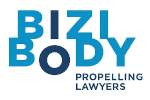Leveraging paperless document management within legal practice management
The law increasingly moves in digital flows: scanned engagement letters and contracts, legal briefs, pleadings, estate documents and wills, spreadsheets, images. Federal courts have embraced document management best practices and been paperless for years, and state courts are converting to electronic filing and paperless case files.
So your firm is now paperless, too – great! In the pandemic era, many firms can make that claim; some went paperless before 2020, and some transitioned rapidly in response to the lockdown. Even without the pandemic, a paperless model has been inevitable for some time.
Have you embraced a paperless document management strategy?
Still, for most organizations, some documents continue to arrive in paper form by mail. Initially, going paperless means that team members gather incoming paper documents and scan them into digital formats. So, yes, the content is digital, but is your information created, organized, and shared in a way that supports efficient firm operations?
Document management processes that are rapidly becoming outdated
Many firms simply create a folder structure on a network drive or in Office 365 and save documents there. Some employees store documents on local drives or laptops, cloud storage apps like Box or Dropbox or even in email inboxes. Though the files are in digital form, organization and search issues persist.
Documents stored in a mailbox or on a local drive are not available to the team. When the need to share arises, they email documents to colleagues as attachments. This creates the problem of multiple versions of a document in multiple storage areas. (And that’s not even addressing the risks of sending confidential information in an email!)
As a next step, everyone in the firm agrees to share on the firm network. Some individuals may adopt their own file naming conventions or sort files into folders where colleagues would not think to look for them. With the shared-drive approach, training and policing employees on filing protocols is time-consuming and error-prone.
Optimal document management: create, organize and share
Going beyond paperless means optimizing technology to make documents and information easy to create, use, store, retrieve and share throughout the life of each document and matter.
An effective paperless document management system that is integrated with a legal practice management environment offers an all-in-one solution for managing cases from initial client engagement through case closure. Legal document management software provides a built-in, matter-centric organizational system for all documents. Documents are not lost or misfiled. Details about each document are known and stored and provide valuable information for firm management and compliance.
Automated document management for your firm
Your firm can build growth and offer a great experience to clients when you’re able to create, organize and share documents and information and collaborate in a portal while protecting clients’ sensitive information and complying with information retention standards. read more
Source: HotDocs, a technology partner of Bizibody Technology


